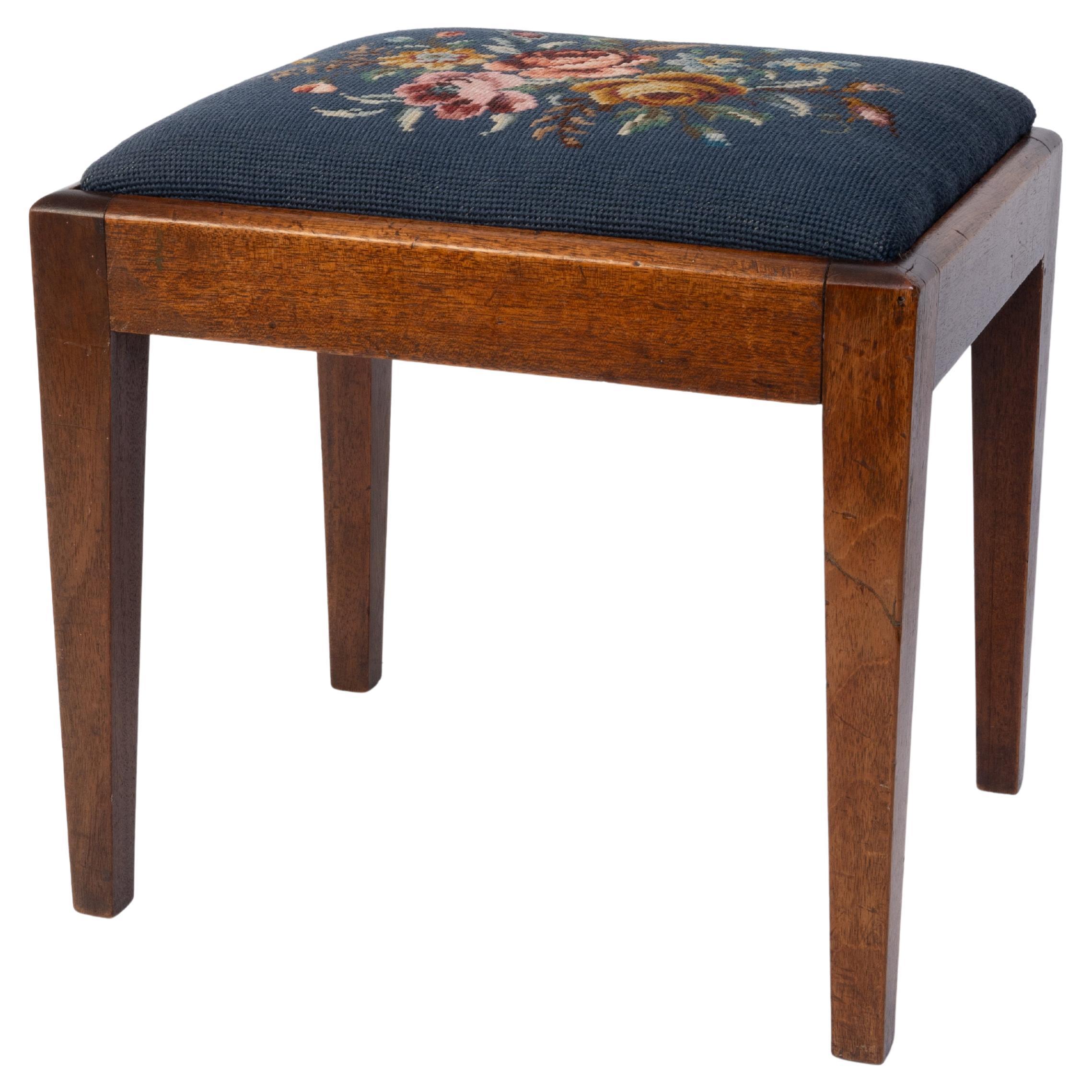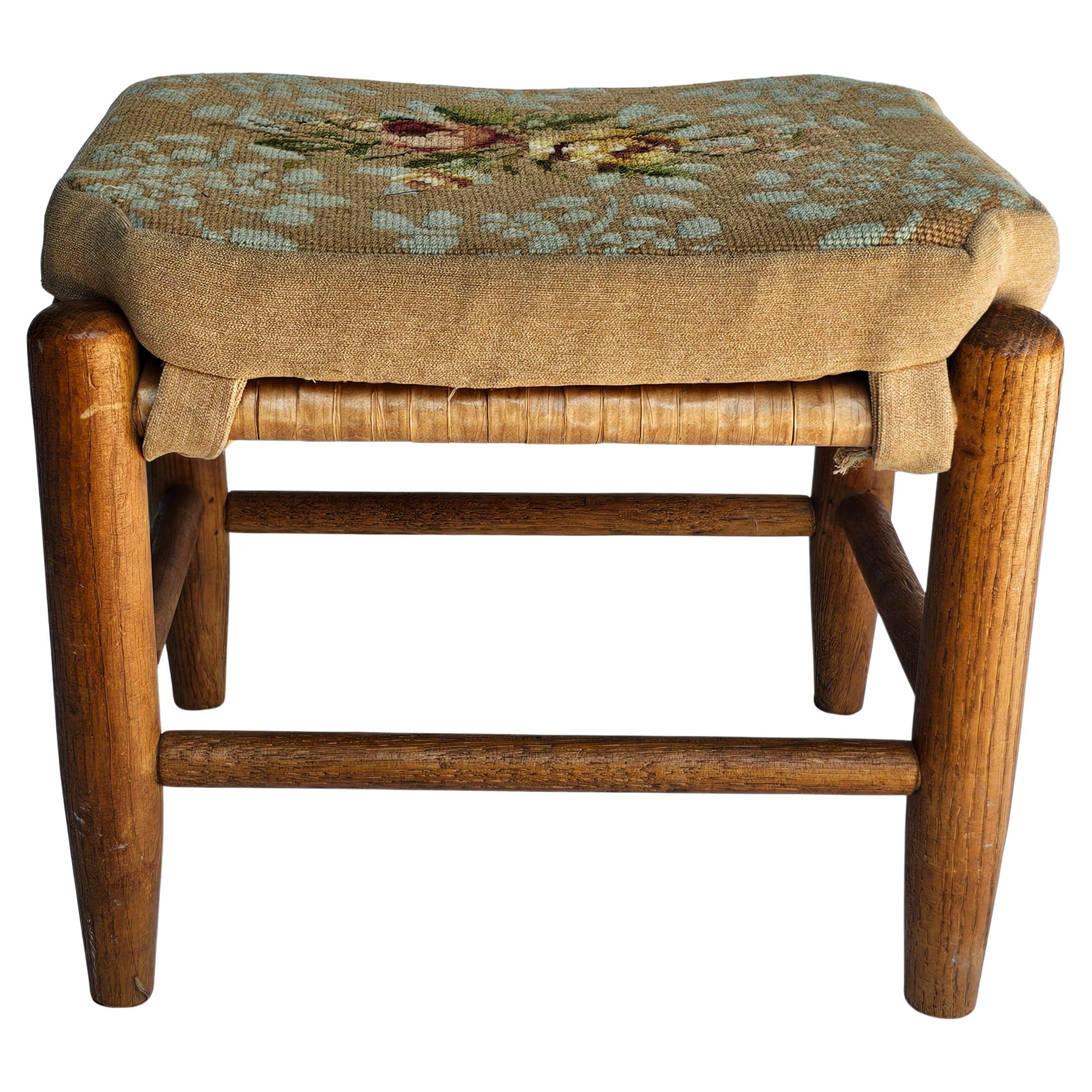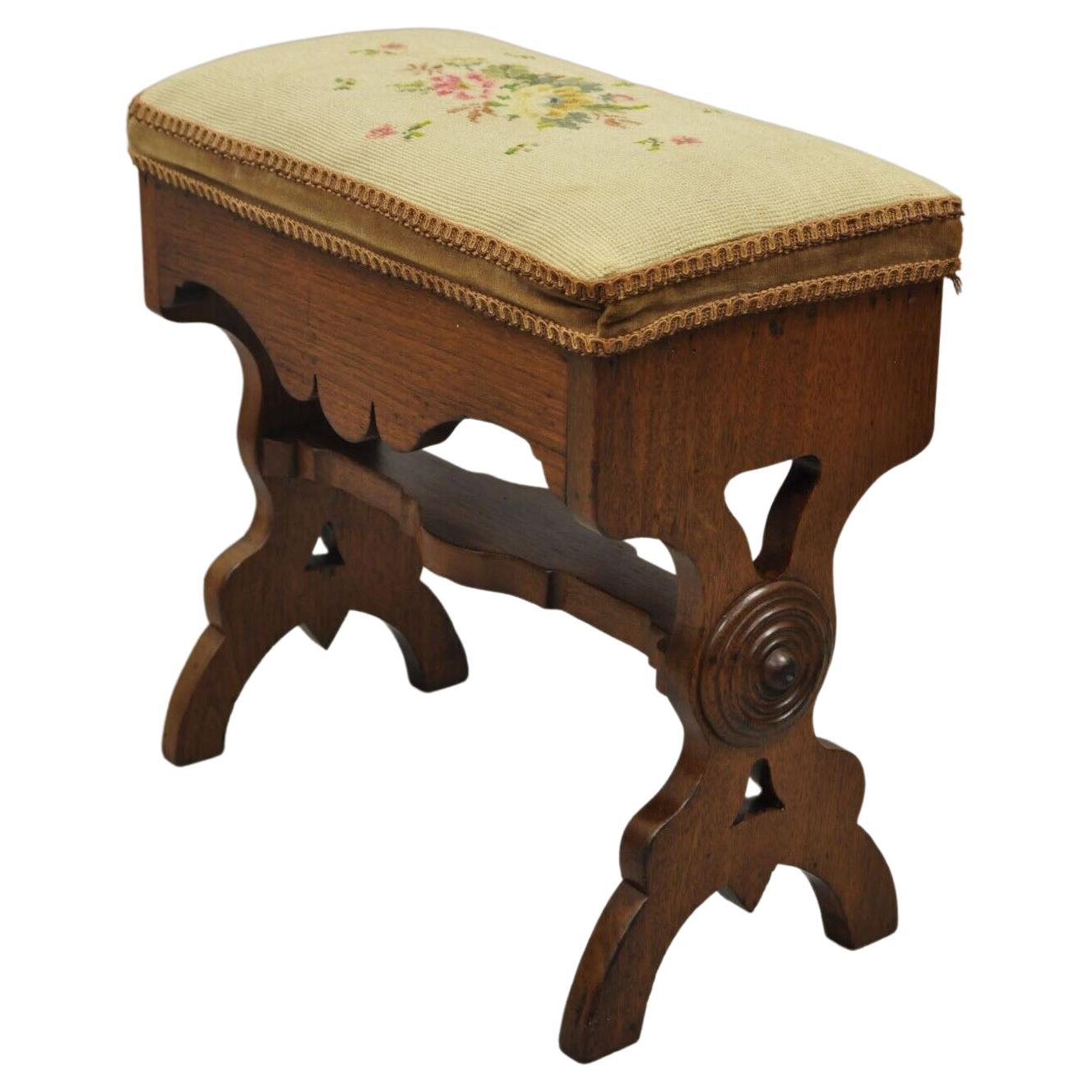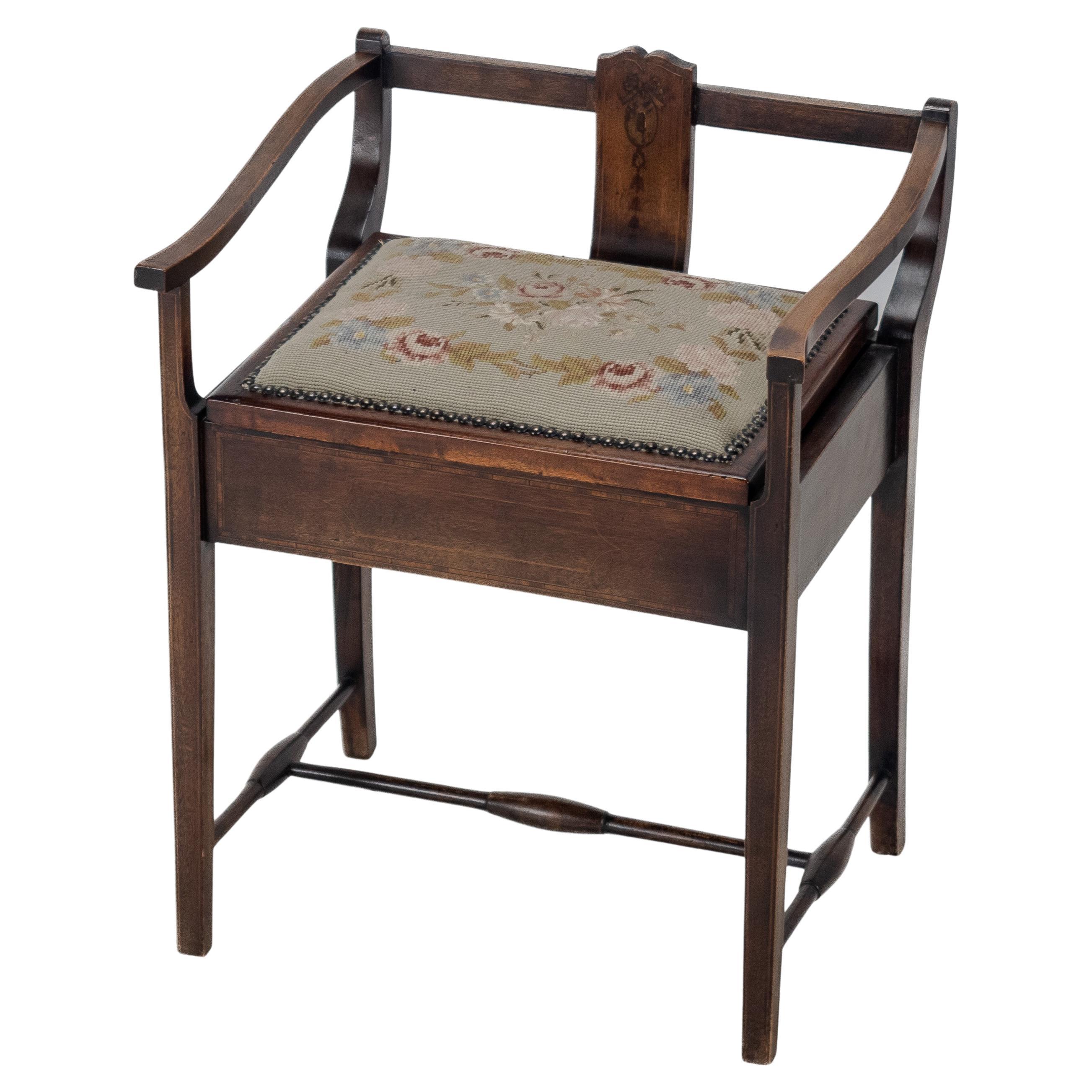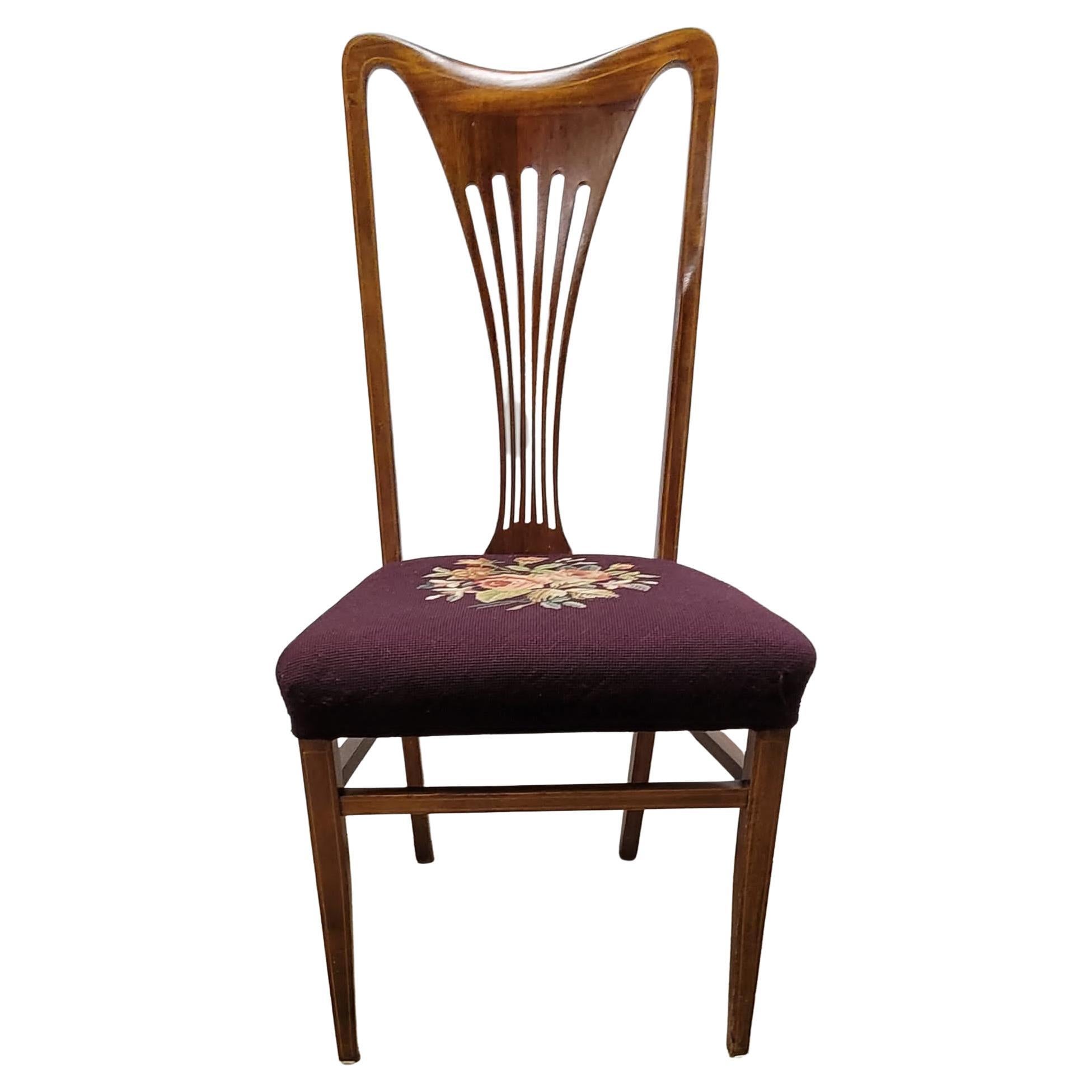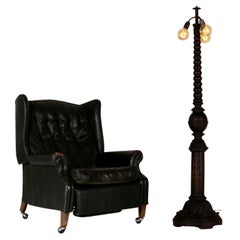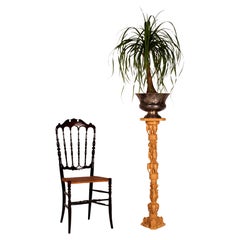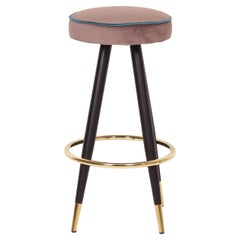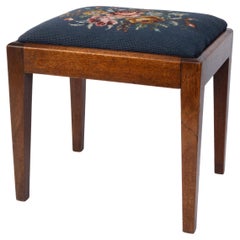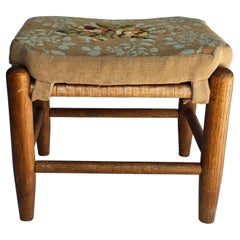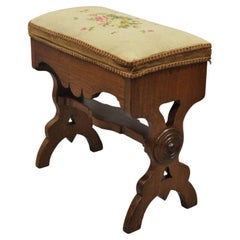Items Similar to art nouveau oak stool chair Jugendstil Rabenau embroidery a. 1910 exc condition
Want more images or videos?
Request additional images or videos from the seller
1 of 12
art nouveau oak stool chair Jugendstil Rabenau embroidery a. 1910 exc condition
$623.57
£463.88
€520
CA$853.88
A$949.40
CHF 495.73
MX$11,556.55
NOK 6,325.25
SEK 5,926.46
DKK 3,958.47
Shipping
Retrieving quote...The 1stDibs Promise:
Authenticity Guarantee,
Money-Back Guarantee,
24-Hour Cancellation
About the Item
solid built oak
Jugendstil
CHAIR
made in Rabenau / Saxonia
upholstered with care - fitted with hand embroidered jute fabric
Rabenau's chairmaking tradition is almost 400 years old. The many special skills developed by Rabenau chairmakers during this time have survived industrialisation, and they have survived national ownership and the Federal Republic of Germany's vocational training regulations unscathed. Today, 16 companies work under the umbrella of a co-operative. They produce chairs and tables in a way that is committed to the best traditions of the trade. The chairmakers in Rabenau demonstrate their skills above all in the faithful reproduction of historical models.
In 1910, the Rabenau-based company supplied the following chairs and tables to furnish the four-hundred-year-old "Old Nikolai School" in Leipzig's Nikolaikirchhof.
Chair construction
Adam Friedrich Zürner, the surveyor of Saxony's Elector Augustus the Strong, noted on his travels in 1720:
Rabenau, here it is remarkable that almost all the inhabitants are chairmakers, who make wooden backrests into chairs, also woven English, carved and other fine chairs, have been sent to Dresden, Freiberg, Magdeburg, Berlin and Hamburg for over 100 years, including 100 dozen a year.
This statement by Zürner is an important document about the beginning and development of chair making in Rabenau at that time.
Rabenau has maintained its position as the centre of handcrafted chair making in Saxony to this day. What's more, the traditional art of chair making has been preserved here like in no other region of Germany.
The history of chairmaking from the past to the present can be experienced in the German Chairmaking Museum.
Rabenau is nicknamed the "chair-making town".
- Dimensions:Height: 17.72 in (45 cm)Width: 22.05 in (56 cm)Depth: 17.33 in (44 cm)Seat Height: 17.72 in (45 cm)
- Style:Art Nouveau (In the Style Of)
- Materials and Techniques:
- Place of Origin:
- Period:1910-1919
- Date of Manufacture:1910-1920
- Condition:
- Seller Location:Landshut, DE
- Reference Number:1stDibs: LU8587237286512
About the Seller
5.0
Gold Seller
Premium sellers maintaining a 4.3+ rating and 24-hour response times
1stDibs seller since 2023
21 sales on 1stDibs
Typical response time: 2 hours
- ShippingRetrieving quote...Shipping from: Bodenkirchen , Germany
- Return Policy
Authenticity Guarantee
In the unlikely event there’s an issue with an item’s authenticity, contact us within 1 year for a full refund. DetailsMoney-Back Guarantee
If your item is not as described, is damaged in transit, or does not arrive, contact us within 7 days for a full refund. Details24-Hour Cancellation
You have a 24-hour grace period in which to reconsider your purchase, with no questions asked.Vetted Professional Sellers
Our world-class sellers must adhere to strict standards for service and quality, maintaining the integrity of our listings.Price-Match Guarantee
If you find that a seller listed the same item for a lower price elsewhere, we’ll match it.Trusted Global Delivery
Our best-in-class carrier network provides specialized shipping options worldwide, including custom delivery.More From This Seller
View AllUnique and antique Austrian floor lamp stand, carved and turned : solid oak wood
Located in Landshut, BY
This is an exceptional example of a late 19th-century floor lamp.
The floor lamp base, dating from the late 1860s or early 1870s, is exquisitely carved and turned.
The structural co...
Category
Antique 1870s Austrian Victorian Floor Lamps
Materials
Oak
extremely rare Flower Stand pedestal faux ivory stone Oriental Victorian Style
Located in Landshut, BY
An extremely rare
Flower Stand Pedestal
Erotic Oriental Victorian style
Imitation Ivory
This is an original piece made in Italy in the 1960s.
The statue is made from a mixture ...
Category
Vintage 1960s Italian Victorian Pedestals and Columns
Materials
Marble
Italian BAR / COUNTER STOOL ~ CAPPUCCINO ~ 50s 60s Style Iron / Brass / Velvet
Located in Landshut, BY
Italian
~ LIGHT CAPPUCCINO ~
BAR / COUNTER STOOL
1950s / 1960s style
Lacquered iron / Solid brass / Velvet / Upholstered
hq foam upholstered and kedered
Category
2010s Italian Mid-Century Modern Pedestals and Columns
Materials
Brass, Iron
Italian BAR / COUNTER STOOL ~ CAPPUCCINO ~ 50s 60s Style Iron / Brass / Velvet
Located in Landshut, BY
Italian
~ LIGHT CAPPUCCINO ~
BAR / COUNTER STOOL
1950s / 1960s style
Lacquered iron / Solid brass / Velvet / Upholstered
hq foam upholstered and kedered
Category
2010s Italian Mid-Century Modern Pedestals and Columns
Materials
Brass, Iron
Italian BAR / COUNTER STOOL ~ CAPPUCCINO ~ 50s 60s Style Iron / Brass / Velvet
Located in Landshut, BY
Italian
~ LIGHT CAPPUCCINO ~
BAR / COUNTER STOOL
1950s / 1960s style
Lacquered iron / Solid brass / Velvet / Upholstered
hq foam upholstered and kedered
Category
2010s Italian Mid-Century Modern Pedestals and Columns
Materials
Brass, Iron
Midcentury set of 2 solid cherry wood wingback armchairs & sofa Karl Nothhelfer
Located in Landshut, BY
just beautiful
SET of Sofa & 2 Wingback Armchairs
by Prof. Karl Nothelfer - Designed in 1957
maker: Schörle & Gölz in Stuttgart - Bad Cannstatt
solid Cherry Wood
new upholstery and fabrics in 1998 according to last owner ( since then just in use for 2 years so upholstery is perfect ! )
Seatrests can be removed - and fixed by clips on belts
- high class -
measurements:
easy chair is 70cm wide ~ sofa is 178cm wide
both: seating height 40cm ~ seating depth: 57cm
condition - all firm and in very good condition - no damages
furniture have fully been accurately cleaned ::
- 3 steps: A: air pistol - B: industrial hoover - C: latest Kärcher "wash&hoover" technology
- woods have been polished several times
note: please ask for shipping quote by sending us your postcode/destination
Prof. Karl Nothelfer
* 14 June 1900 ~~ + 20 May 1980
Since the beginning of the 15th century, the Nothelfer family of carpenters has been continuously resident in the former
town of Überlingen without interruption. Every carpenter at that time mastered
all the possibilities of woodworking: so did the Nothelfer. They could carpenter,
even carve altars and figures, and set them in gold, silver and paint.
(churches in Owingen and Hödingen]. Some family members lived and worked
and worked in Hedingen or Hödingen,like today the jubilarian Karl Nothelfer (this in 1975).
His father, Karl Anton Nothelfer, as the eldest of seven siblings, was able to take over his father's carpentry business in Überlingen.
Karl Anton Nothelfer, the eldest of seven siblings, was unable to take over his father's carpentry business in Überlingen.
He instead moved to the industrial town of Singen with his young wife Rosalie, née Hanner, from the
from Hohenzollern in 1896 and moved to the former Poststraße and founded his own carpenter's workshop.
He had a highsense of quality and form and was already a member of the German Werkbund before 1914.
Karl Nothelfer and his three siblings grew up in such air.
After attending school and the secondary school in Singen, the young Karl learned the carpenter's trade in his father's workshop then moved on to the Badische Landes-Kunstschule in Karlsruhe,
where he studied architecture. At that time the well-known furniture professor also worked there
Fritz Spannagel, born in Freiburg in 1891, who settled in 1938 at Ittendorf Castle near Meers-
burg (died 1957). In 1928, the gifted young architect received a teaching assignment at the
at the Karlsruhe School of Art, but followed his teacher Spannagel to Berlin in the same year.
Berlin. Here he worked from 1928-1945 as a teacher - appointed professor in 1931 - at the
Berlin Tischler-Schule, the later Bauschule für Raumgestaltung.
The furniture he created in Berlin became internationally known through many exhibitions and lectures.
nationally known and influential. His furniture creations ushered in a new era in German and
a new era in German and European furniture design. At the world exhibition in Paris
1937 Prof. Nothelfer was awarded the Golden Medal for his work in the furniture sector.
for his work in the furniture sector. A first summary and balance of his work on furniture is given in his standard work
1942 published standard work "Das Sitzmöbel", the first compendium of its kind in the world.
world. In 1950 he published his second work "Furniture". Both books and a
series of brochures were published by Verlag Otto Maier, Ravensburg.
Karl Nothelfer continued to work intensively on the design of seating furniture in the years after 1945.
In 1950 he succeeded in the important invention of the two-legged skid-base chair, which has been
orthopedically - anatomically tested thousands of times - has become accepted all over the world today.
Even the most distinguished American furniture companies such as Miller or Knoll-International
use the skid as the main theme for desks and chairs. At the same time, N. had a groundbreaking
in the redesign of German school furniture and seating for industry.
industry. He succeeded in adapting his furniture forms, which originated in wood and handicraft, to the modern technical
modern technical possibilities of the industry. He thus became the great refor-
of schoolroom furnishings. The architect Nothelfer thinks about himself,
that he made his main contribution in the field of seating furniture, although this was not
was not really his profession.
After the war, Prof. Nothelfer, like so many others, had to start all over again. He settled
settled in his home town of Lake Constance in Hödingen in 1945 as a freelance architect and was
and was involved in all areas of construction in the years after the war. As early as 1935, he had given many
the example of American prefabricated buildings and recommended serial house
and recommended it at a time when no one in Germany was even thinking about mass production. Now he developed
he developed several types of mass-produced houses, which were manufactured in Baiersbronn.
of which more than 800 houses were built in France alone (types Paris, Provence, Normandie).
were built. At that time [1946], as part of the reparations in Strasbourg, there was an exhibition of houses with Swedish, Danish, and French designs.
with Swedish, Danish, Finnish, English and German houses, where the French occupation
for which 6 different types were sent from the French occupation zone, the
Nothelfer's house type was considered the top of this exhibition.
Karl Nothelfer was also involved in the development of chipboard. In 1946, together with others in Munich, he founded the first
magazine "Bauen und Wohnen" ("Building and Living") after the war and remained its co-editor for many years.
co-editor of this magazine for many years. By presenting his own work, he has here
interpreted what the essence of the magazine wanted to be: Building, in order to live in it, in order to live as a human being and humanly in the built. Karl Nothelfer planned his houses
furniture ground plan, from the need for living. In 1948 he was appointed honorary senator of the State Building
school in Holzminden.
Karl Nothelfer did not build much in Singen. The first post-war house was Haus
Fahr on the slope of the Hohentwiel (Domäne); the building material came from a demolished
log house that a French officer had built for himself on the Schie- nerberg.
nerberg. In 1952, he also built the administration building of the aluminum rolling mill in Singen.
rolling mills in Singen, with relief and wall painting by C. G. Becker. In Überlingen he built
In Überlingen he built, among others, the Buchinger Sanatorium, the Riese+ Hähnel radio house and
various reconstructions in the old town: Haus Kitt with the Glockenspiel, the Haus mit dem
Bacchus in the Überlingen village, the Dolphin Fountain in Hödingen (1975). Probably the most beautiful
Haus Nothelfers, the Haus Himmelheber, stands in Baiersbronn-Tonbach. On the airfield
Mengen, Nothhelfer built the casino building with the 30 square meter faience painting Ikarus by
C. G. Becker. In 1954 he founded a second office with architect Hans Schwingen in Düsseldorf.
Office, which primarily fertilized the housing construction, true to the motto:from the inside to
planning from the outside. The Minister of Housing awarded a prize to the best social housing in North Rhine-
Westphalia; it was from the Nothelfer+Schwingen studio in Düsseldorf. Also the idea of
new idea of home ownership was also promoted by Nothelfer+Schwingen.
promoted by Nothelfer+Schwingen. On the occasion of the red jubilee of the law about condominium ownership
Nothelfer gave a lecture in Essen in 1961 on condominium ownership in Europe (published as a brochure).
published as a brochure]. From Düsseldorf, among many others, in the silk city...
Category
Vintage 1950s German Mid-Century Modern Living Room Sets
Materials
Fabric, Cherry, Upholstery
You May Also Like
Antique English Arts And Crafts Needlepoint Stool C.1900
Located in London, GB
Antique English Arts And Crafts Needlepoint Stool C.1900
In very good condition, with minor expected signs of wear commensurate of age.
Category
Antique Early 1900s English Arts and Crafts Stools
Materials
Wool, Oak
Mid Century Maple and Tapestry Needlepoint Upholstered Footstool
Located in Germantown, MD
A Mid Century Maple and Tapestry Needlepoint Upholstered Footstool.
Measures 14" in width, 11" in depth and 12" in height.
Category
Mid-20th Century American Mid-Century Modern Stools
Materials
Tapestry, Upholstery, Maple
Antique Eastlake Victorian Carved Walnut Stool Bench with Needlepoint Seat
Located in Philadelphia, PA
Antique Eastlake Victorian carved walnut stool bench with needlepoint seat. Item features a needlepoint seat, stretcher base, solid wood fra...
Category
Antique 19th Century Victorian Stools
Materials
Walnut
Mahogany Inlaid Tapestry Seat Piano / Music Storage Stool Edwardian
Located in Leeds, GB
An early 20th century, Edwardian period mahogany framed piano stool. The hinged tapestry seat lid reveals a small storage compartment. The frame in inlaid with bowwood stringing.
Di...
Category
Early 20th Century English Edwardian Stools
Materials
Mahogany
Vintage American Mahogany and Inlay Needlepoint Upholstered Chair
Located in Germantown, MD
Recently needlepoint reupholstered mahogany side chair with inlays. Good vintage condition. Measures 18" in width, 18" in depth and stands 39" tall. Seat height is 18".
Category
Mid-20th Century American Mid-Century Modern Side Chairs
Materials
Upholstery, Mahogany
Antique classic oak stool, Germany, 19th. Century
Located in Berlin, DE
Antique classic oak stool, Germany, 19th. Century
Solid wood, square shape. Seat standing on four legs connected to a central bridge. Blue floral seat cover with elaborate innerspr...
Category
Antique 19th Century German Ottomans and Poufs
Materials
Oak
More Ways To Browse
Antique Oak Stool
Used School Tables And Chairs
Used Solid Oak Table And Chairs
Antique Table With Four Chairs
Antique Work Stool
Used School Stools
English Oak Stool
English Embroidery
Antique Umbrella Table
Art Nouveau Embroidery
Daisy Chair
Dutch Inlay Chair
Faye Toogood Cushion
Formel A
Frank Gehry Cardboard
Gae Aulenti Chair Locus
Gio Ponti Chrome Chair
Gravity Balance Chair
